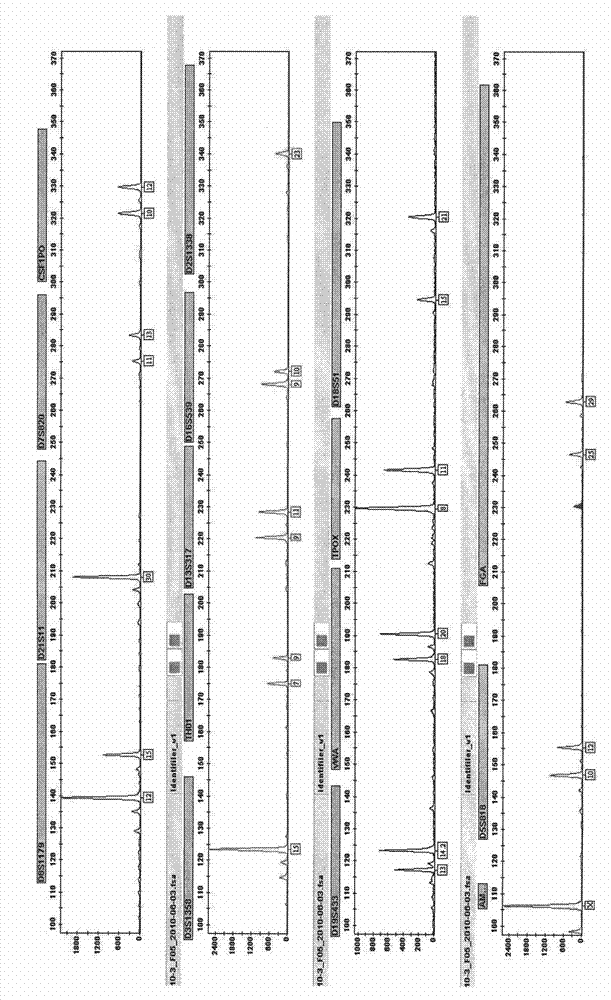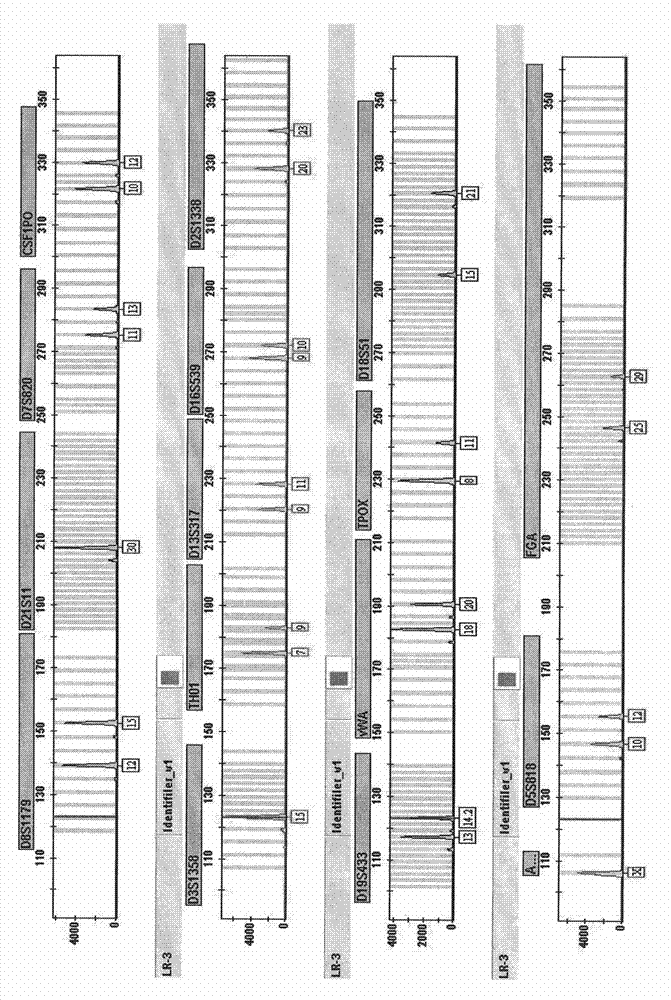Identification method of nucleated cells and application thereof
A technology of nucleated cells and cells, applied in the fields of biotechnology and forensic science, can solve problems such as deviation of genotyping results, achieve weak amplification inhibition, avoid the possibility of sample contamination, and simplify the staining steps
- Summary
- Abstract
- Description
- Claims
- Application Information
AI Technical Summary
Problems solved by technology
Method used
Image
Examples
Embodiment 1
[0054] Through this example, the method for DNA typing of nucleated cells in a mixed specimen using a micromanipulator capture method combined with an LV-PCR single-cell separation and detection platform in the present invention is specifically illustrated, and the mixed specimen is simulated saliva The mixed sample containing mixed cells of oral mucosal epithelial cells and epidermal cells isolated from the sample, the method includes:
[0055] 1. Capturing oral mucosal epithelial cells using a micromanipulator capture method
[0056] (1) Stain the cells in the mixed sample
[0057] Put the mixed test material obtained by using 1 oral swab (cotton swab) into a 1.5mL Eppendorf centrifuge tube containing 1mL TNE, shake the centrifuge tube, so that the cells on the mixed test material are fully detached, and the cells are in the Disperse as much as possible in the solution to obtain a cell suspension;
[0058] The prepared gentian violet liquid (dissolve 5g of gentian amethyst...
Embodiment 2
[0079] According to Example 1, the method for DNA typing of nucleated cells in mixed samples using the micromanipulator capture method combined with LV-PCR single-cell separation and detection platform, the mixed samples are simulated fine spot samples A mixed sample of isolated mixed cells containing sperm cells and vaginal epithelial cells, the method comprising:
[0080] 1. Capturing sperm cells using the micromanipulator capture method
[0081] (1) Stain the cells in the mixed sample
[0082] Take a 1cm×1cm filter paper with sperm spots, put it into a 1.5mL Eppendorf centrifuge tube, add a certain amount of TE until the filter paper can be submerged, and use sterile tweezers to turn over and squeeze the filter paper to elute the sperm cells to the maximum; Vortex After oscillating, centrifuge the cannula to remove the filter paper, discard the supernatant, resuspend the precipitate with pure water, and centrifuge again, and repeat 3-4 times to fully remove free DNA in the...
Embodiment 3
[0104]This example provides a method for DNA typing of nucleated cells in a mixed sample material using a single cell separation and detection platform combined with laser microdissection and LV-PCR. The mixed sample material is simulated saliva sample The isolated mixed sample material containing mixed cells of oral mucosa epithelial cells and epidermal cells, the method comprising:
[0105] 1. Capturing oral mucosal epithelial cells using laser microdissection
[0106] (1) Stain the cells in the mixed sample
[0107] The specific dyeing steps are the same as in Example 1. Centrifuge the cell suspensions stained with hematoxylin, gentian violet, and methylene blue at 8000rpm for 3 minutes, discard the supernatant to obtain cell pellets, and resuspend the cell pellets stained with the above three dyes in 30ul of TNE buffer Make smears of the final cell suspensions, specifically: drop the cell suspensions resuspended in TNE buffer on the middle of a filmed (PEN film) slide, a...
PUM
| Property | Measurement | Unit |
|---|---|---|
| concentration | aaaaa | aaaaa |
| concentration | aaaaa | aaaaa |
| concentration | aaaaa | aaaaa |
Abstract
Description
Claims
Application Information
 Login to View More
Login to View More - R&D
- Intellectual Property
- Life Sciences
- Materials
- Tech Scout
- Unparalleled Data Quality
- Higher Quality Content
- 60% Fewer Hallucinations
Browse by: Latest US Patents, China's latest patents, Technical Efficacy Thesaurus, Application Domain, Technology Topic, Popular Technical Reports.
© 2025 PatSnap. All rights reserved.Legal|Privacy policy|Modern Slavery Act Transparency Statement|Sitemap|About US| Contact US: help@patsnap.com



